Malaga airport is the busiest in southern Spain, and every year tens of thousands of visitors pass through it on the way to various holiday destinations in the region. Sadly, all too many still think of Malaga itself as a somewhat tacky Costa del Sol beach resort, and don’t stop to see what it has to offer. And there’s lots. So much, in fact, that despite some cheating in the form of two things for one item, our list of the top ten things to do doesn’t include the Cathedral, most of the city’s eclectic collection of museums, or the famous Botanical Gardens, although it does include a few more unusual and personal choices that you might not find in the tourist guides.
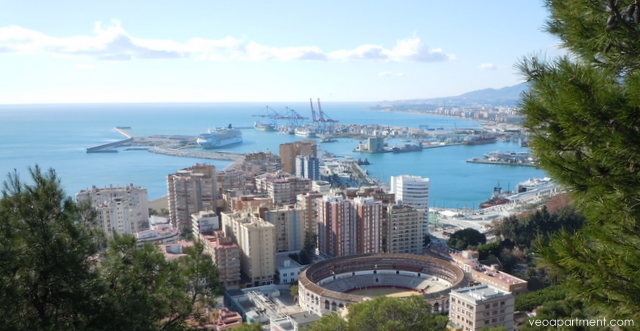
1. Get a View from the Top
Take a bus or a taxi up to the top of the Gibralfaro Hill, visit the fortress, and have a drink on the terrace of the Parador Hotel. Both are worth doing in themselves, but the real attraction is the stunning view across the city and its harbour. It’s a great way to start your stay. Afterwards walk back down the path that leads to…
2. The Alcazaba
The 11th century Moorish palace-fortress complex stands on a rocky outcrop at the edge of the old centre. Reminiscent in many ways of the Alhambra, though smaller, it has some opulent living quarters and beautiful formal garden courtyards, though it’s principal function as a castle is always obvious. Nearby are the well-preserved Roman amphitheatre (rediscovered by chance in 1951), the Palacio Aduanas and…
3. The Picasso Museum
Málaga is the birthplace of Pablo Picasso, so a visit to the museum in the Palacio Buenavista is a must. Although it’s not by any means the biggest Picasso collection it does have some interesting works and special exhibitions in a gorgeous building complete with Phoenician ruins in the basement. While you’re in the centre of town you should also look in at the Carmen-Thyssen museum, and the house in Plaza Merced where Picasso was born. From Plaza Merced…
4. Walk the Main Drag
For a flavour of the historic centre walk down Calle Granada, past the church of St James and the Restaurant El Pimpi to the Plaza de la Constitución, and on down Calle Larios, perhaps the most elegant shopping street we’ve seen in Spain, to the entrance to the old harbour, now totally refurbished and known as…
5. Muelle Uno
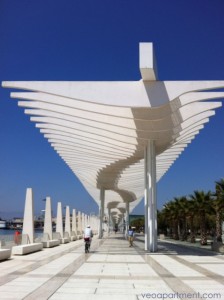 The inner harbour has recently been redeveloped as a shopping and leisure area, with a marina and restaurants where you can watch the sun sparkling on the water while you eat. The old landmarks of the lighthouse and the fishermen’s chapel preserve some of the original character of the port. Stroll the Paseo El Palmoral de las Sorpresas to…
The inner harbour has recently been redeveloped as a shopping and leisure area, with a marina and restaurants where you can watch the sun sparkling on the water while you eat. The old landmarks of the lighthouse and the fishermen’s chapel preserve some of the original character of the port. Stroll the Paseo El Palmoral de las Sorpresas to…
6. Málaga Park
Beside the harbour is the long shady promenade through Málaga Park, full of exotic plants, statues and one of my favourite “water features” anywhere. Although it’s right next to the main road it’s still a peaceful oasis and a lovely place to walk or just sit for a while. There are more gardens across the street with little hidden paths below the walls of the Alcazaba.
7. Atarazanas Market
No visit to a Spanish city would be complete without going to its main market. The Atarazanas has been refurbished in recent years, but has a history dating back to Moorish times, when it was the city’s shipyard (and on the waterfront). There are the usual great displays of fresh produce, a market bar with really fresh tapas, and more unusually, a big stained-glass window at one end.
8. The Automobile Museum
A little way out of the centre, but still easy to get to, is the Automobile Museum, regarded as one of the best of its kind in Europe. Housed in the splendid old tobacco factory building it boasts a large and immaculately maintained collection of vintage and modern cars, as well as fashion and art exhibitions. Definitely worth a visit even if you’re not an enthusiast.
9. Pedregalejo Fishing Village
Take a walk out along the palm-tree-lined seafront road from Malagueta Beach, past the rustically dilapidated Baños del Carmen, to the fishing village of Pedregalejo. Have a seafood lunch or dinner at one of the beachfront restaurants where they grill your food on a barbecue, and stroll along the wooden boardwalk beside the Mediterranean Sea.
10. Tapas
Malaga has a thriving and innovative tapas culture, with lots of great places to eat from small traditional tapas bars to beachfront chiringuitos to stylish world-class restaurants. If you find the whole tapas thing a bit daunting then born-and-bred Malagueño Victor Garrido can take you on a tour of the best traditional and gourmet tapas bars and show you how it’s done (in five languages!). We Love Malaga Tapas Tours
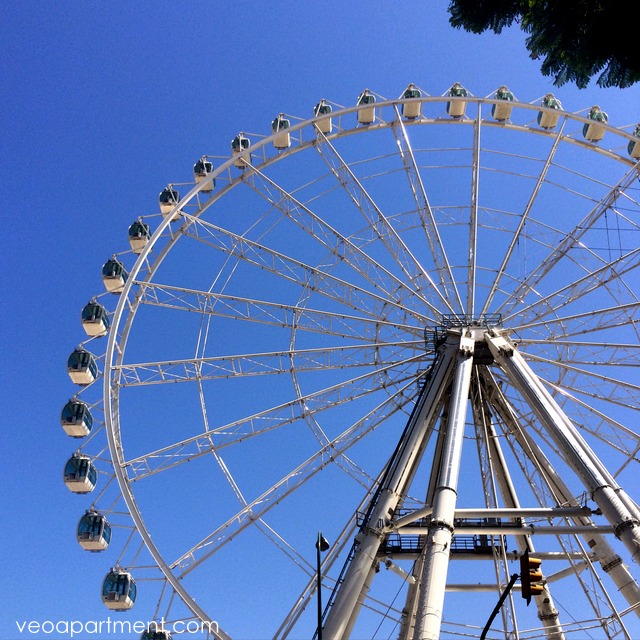 the Mirador Princess
the Mirador Princess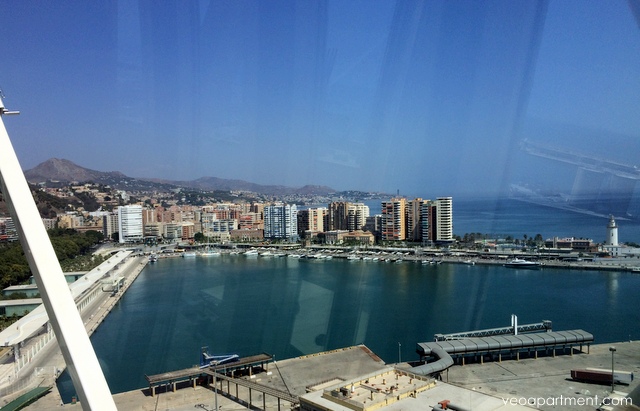 view of Muelle Uno from atop the Wheel
view of Muelle Uno from atop the Wheel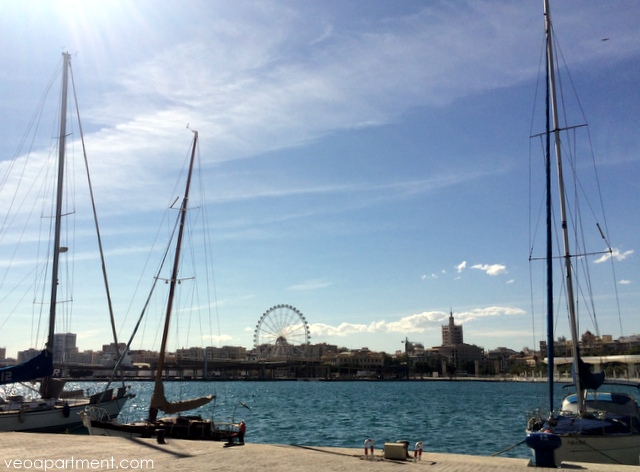 view of the Wheel from Muelle Uno
view of the Wheel from Muelle Uno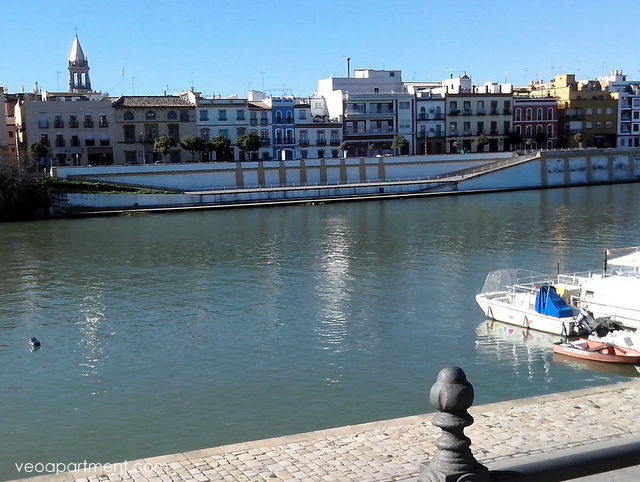
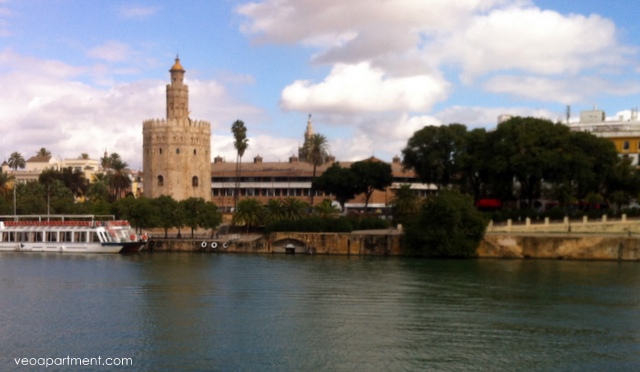
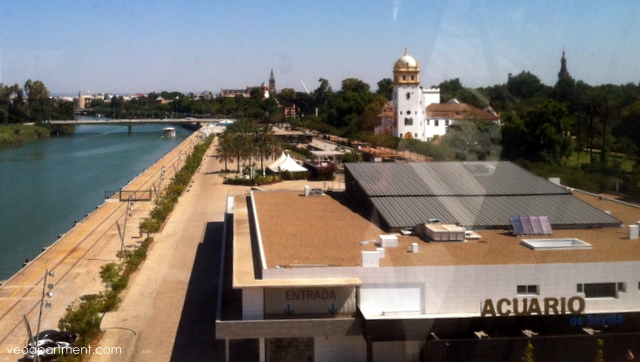
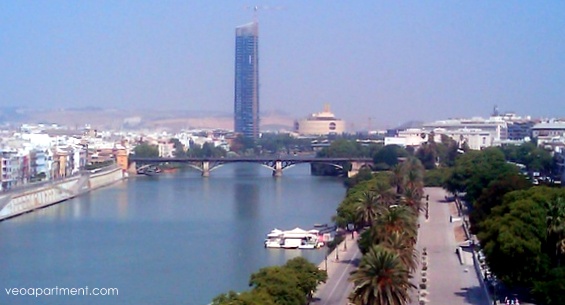
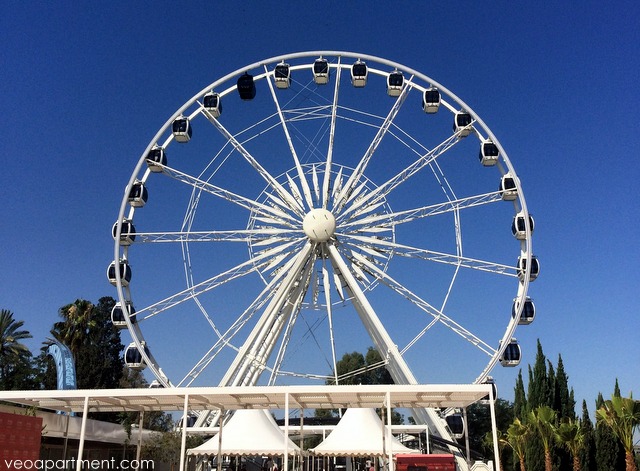
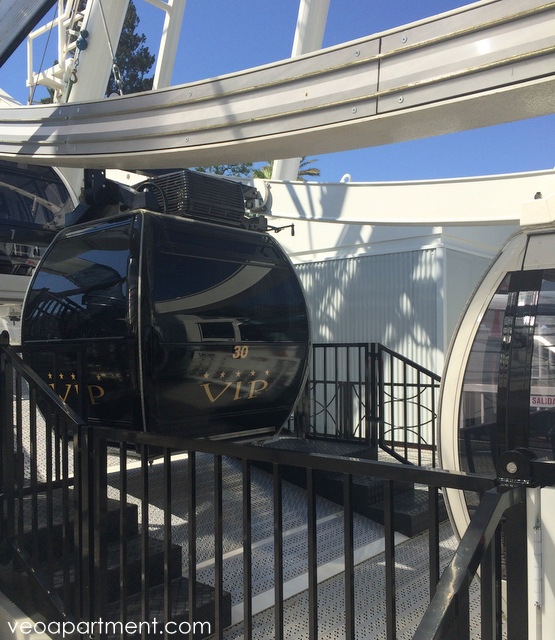 the VIP cabin
the VIP cabin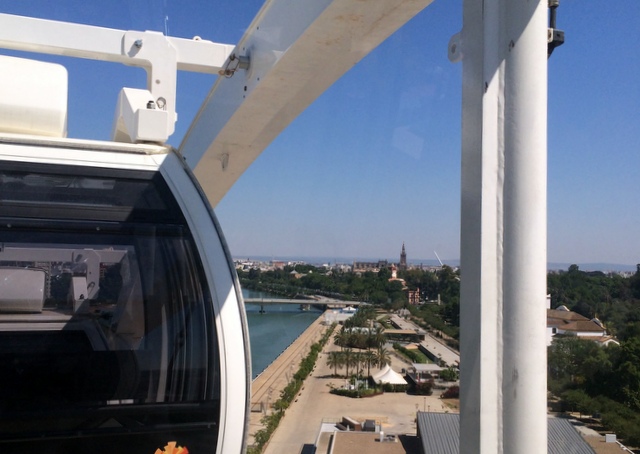 a different perspective of the Cathedral
a different perspective of the Cathedral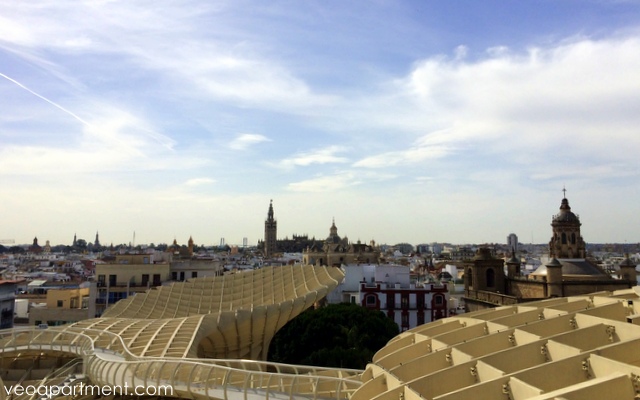
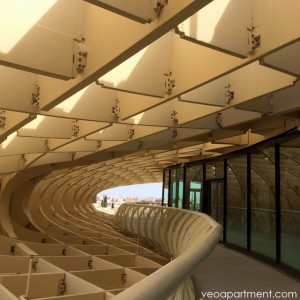 But it was all worth it in the end. The first time you see them is definitely one of those “Wow!” moments. Said to be the largest wooden structure in the world, it swoops and arches above you like, well, a giant mushroom. But it’s functional, too. At ground level, as promised, is the Encarnación market, back in its rightful home after a break of 37 years, with shops and bars alongside. The roof of the market provides an open space for public events, especially the Christmas fair, world cup finals on the big screen, and occasional concerts. Below ground-level is the Antiquarium, the museum that houses the Roman ruins, which have been carefully restored and are a must-see for anyone with an interest in history. From there you can also take the lift up to the top. The walkways give you a great view of the surroundings, and you can enjoy a drink and a tapa at the Gastrosol bar complex.
But it was all worth it in the end. The first time you see them is definitely one of those “Wow!” moments. Said to be the largest wooden structure in the world, it swoops and arches above you like, well, a giant mushroom. But it’s functional, too. At ground level, as promised, is the Encarnación market, back in its rightful home after a break of 37 years, with shops and bars alongside. The roof of the market provides an open space for public events, especially the Christmas fair, world cup finals on the big screen, and occasional concerts. Below ground-level is the Antiquarium, the museum that houses the Roman ruins, which have been carefully restored and are a must-see for anyone with an interest in history. From there you can also take the lift up to the top. The walkways give you a great view of the surroundings, and you can enjoy a drink and a tapa at the Gastrosol bar complex.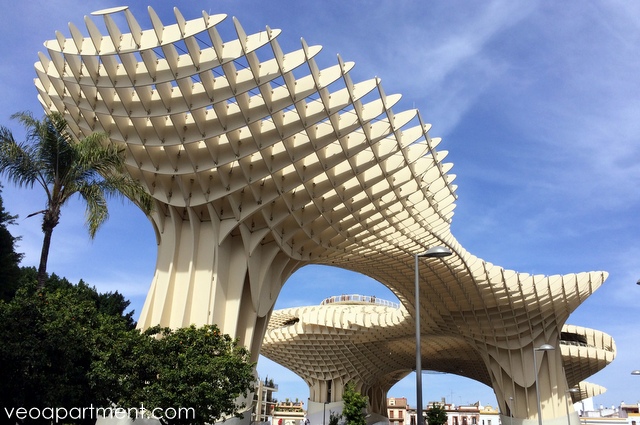

 The inner harbour has recently been redeveloped as a shopping and leisure area, with a marina and restaurants where you can watch the sun sparkling on the water while you eat. The old landmarks of the lighthouse and the fishermen’s chapel preserve some of the original character of the port. Stroll the Paseo El Palmoral de las Sorpresas to…
The inner harbour has recently been redeveloped as a shopping and leisure area, with a marina and restaurants where you can watch the sun sparkling on the water while you eat. The old landmarks of the lighthouse and the fishermen’s chapel preserve some of the original character of the port. Stroll the Paseo El Palmoral de las Sorpresas to…